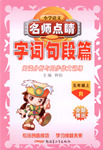题目内容
I have _______basketball. And I play _________basketball every day.
A. a; the B. a; / C. an; the D. the; /
练习册系列答案
 名师点睛字词句段篇系列答案
名师点睛字词句段篇系列答案
相关题目
题目内容
I have _______basketball. And I play _________basketball every day.
A. a; the B. a; / C. an; the D. the; /
 名师点睛字词句段篇系列答案
名师点睛字词句段篇系列答案